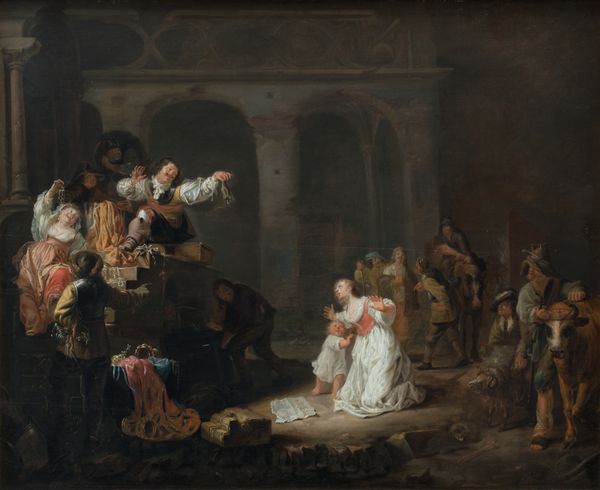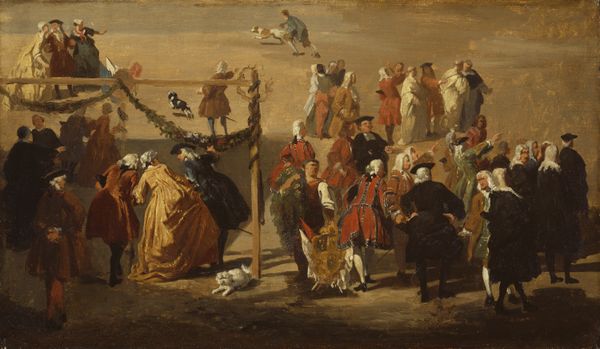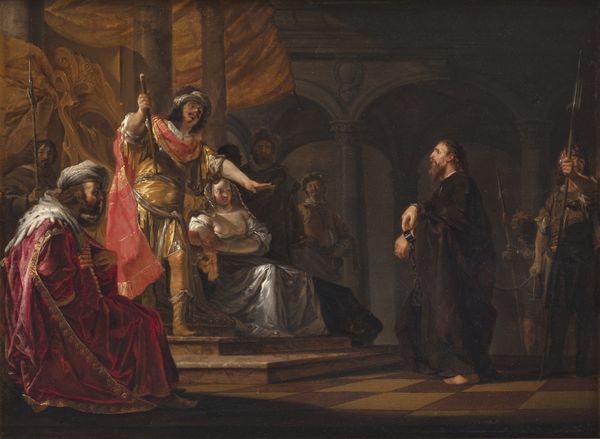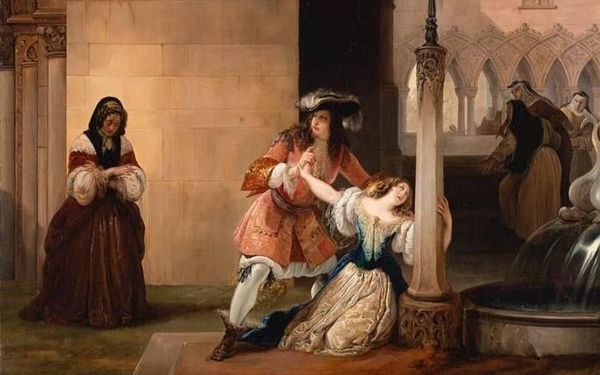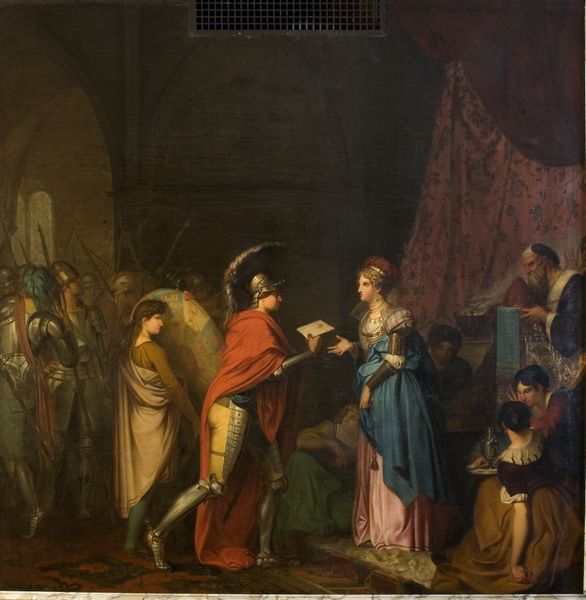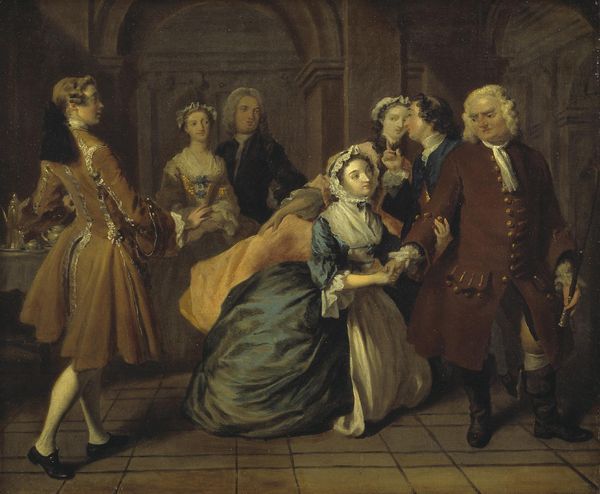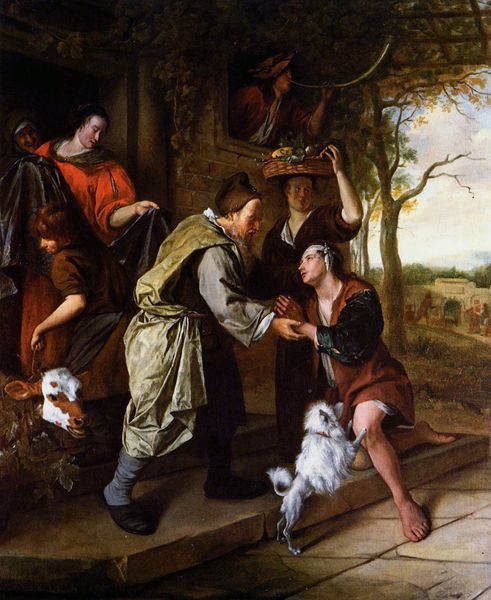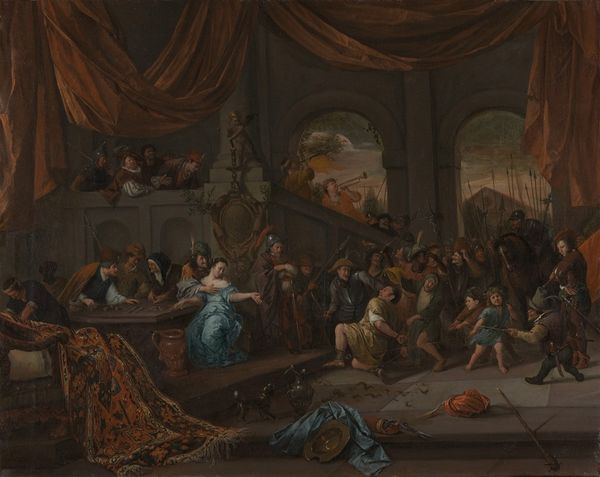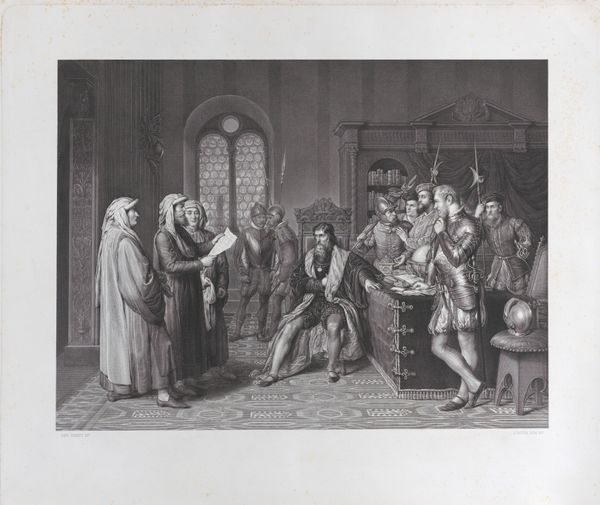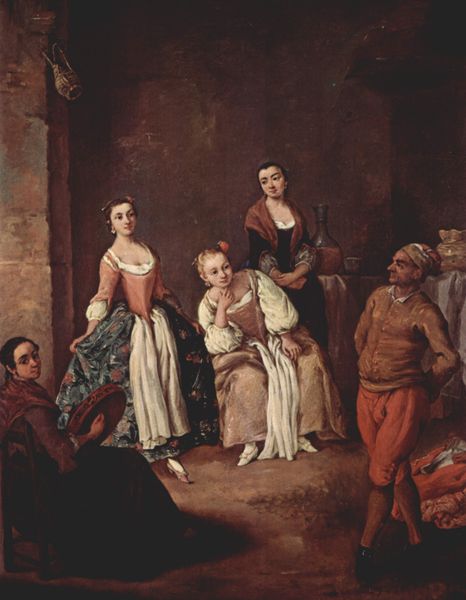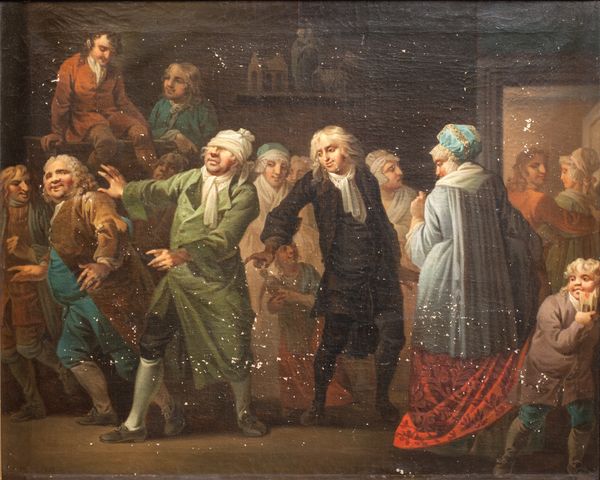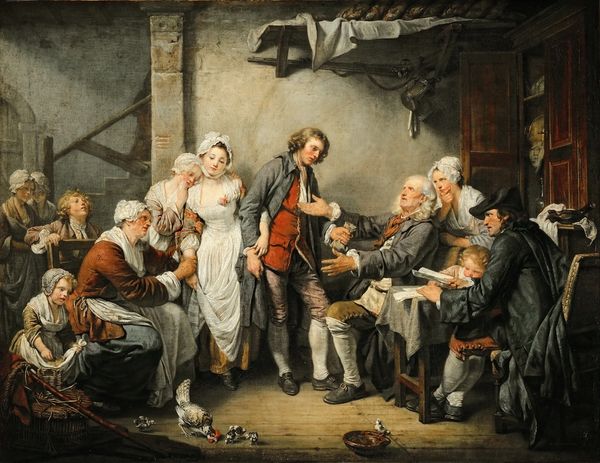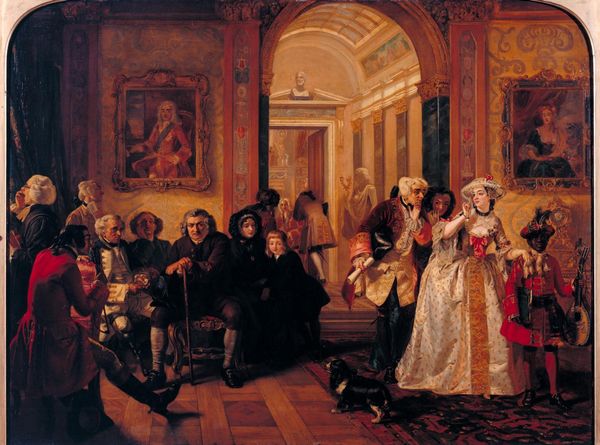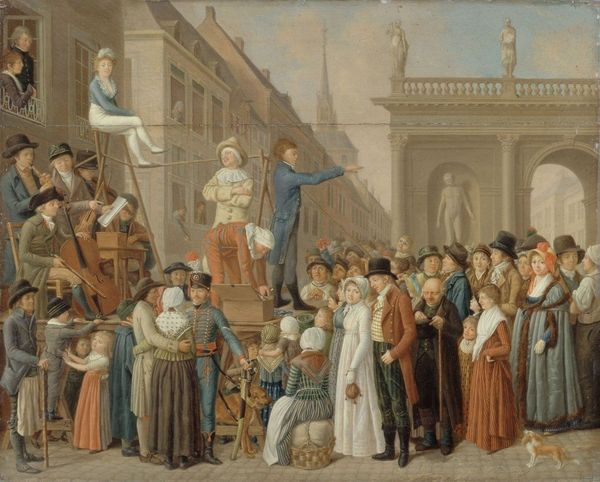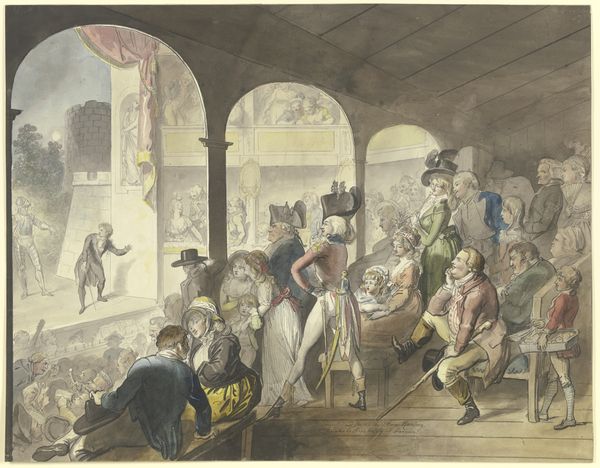
painting, oil-paint, oil
#
gouache
#
narrative-art
#
baroque
#
painting
#
oil-paint
#
oil
#
oil painting
#
group-portraits
#
cityscape
#
genre-painting
Dimensions: 59.5 x 72.4 cm
Copyright: Public Domain
Curator: Oh, what a chaotic little stage! Anonymous's oil on canvas, "Venetian Jugglers in front of the Palace of the Doge," from the mid-18th century—somewhere between 1750 and 1760, they reckon. Found nestled here at the Städel Museum. First thoughts? Editor: Absolute pandemonium! In the best way, of course. My eye dances all over the composition. The colours pop. Everyone seems up to something! Are we meant to focus on the central performance or the theatrics surrounding it? Curator: Exactly! Anonymous, bless their soul, captured the whole hullabaloo of Venetian street life. This painting gives us such an insight into social dynamics. The artist shows the stratification of society here— from the Doge's palace overlooking everything, all the way to the folks on the ground trying to enjoy themselves amid everyday swindles. Editor: You know, when I see paintings like this, especially the depictions of marginalized figures and street performers, I'm always thinking about who holds the power to narrate whose stories. I wonder about this juggler's agency versus the painting's anonymous creator? I mean, they are both performing. And which stories end up being valued and remembered. Does art have a role to resist historical erasure? Curator: Definitely food for thought. It almost has the flavor of Commedia dell’Arte with its masked figures. Each performer seems to play a part. Are the watchers unwitting extras in someone else’s drama? Look how all the figures face inward, toward that point, drawing you to it. The aerial perspective, too. You are set above it all. Does that invite our own scrutiny as spectators? Editor: Right? Everyone’s engaged in this little street hustle, and at the same time we are distant voyeurs. You know, that tension between engagement and observation really brings home how spectacle can both unite and divide a society. All those little exchanges—cash, knowing glances. Even if fleeting, such performances and this artwork represent sites where norms are affirmed and resisted. Anonymous makes us question who profits from that? Who is simply left watching. Curator: Ooh, a potent perspective! This image isn’t simply historical—it has echoes rippling into the present. I'll look at street performers and bustling markets in a different light now!
Comments
stadelmuseum about 2 years ago
⋮
The appearance of jugglers and circus artistes is trumpeted forth from the arcades of the Doge's Palace in Venice in the true sense of the word. A masked man holds up a pig's trotter and balances an object with his other hand - is he a quack doctor? In front, a lady in a light blue dress coquettishly delights a gallant gentleman, but the stubbly chin suggests that the so-called gnaga mask is actually hiding a man's face. The masked scholar in the background also represents a type; perhaps he is part of a troupe of actors. In fact, the boundaries between actors and public have become blurred. Is the gentleman from the Orient part of the ensemble, or is he a foreign merchant? And what about the elegantly dressed gentleman and his companion, before whom a beggar woman is bowing? The scene is full of riddles: it is carnival time in Venice.
Join the conversation
Join millions of artists and users on Artera today and experience the ultimate creative platform.
